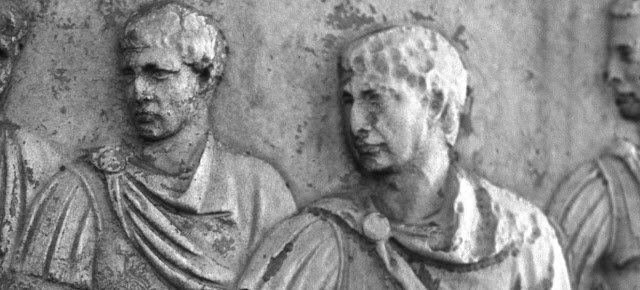The events which led up to the creation of the first praetorship in 367 B.C. have already been described. The new magistrate was to take over the duties hitherto performed by the consuls with respect to civil jurisdiction. This, it may as well be noted at once, does not mean that the praetor was a judge in our sense of the word. A Roman civil trial, until well on into the empire, always took place in two stages, the first of which alone was the concern of the jurisdictional magistrate. This was the stage in iure, in which only the preliminaries and especially the issue between the parties was settled. It was in the second stage, apud iudicem, that the actual trial took place and the issue raised was decided, the judge (iudex) in this stage being, not a magistrate, but a private person appointed for that purpose.
It is this division of functions between the magistrate and the iudex which alone makes it possible to understand how the Romans were able to manage for so long with a single jurisdictional magistrate, for it was not until about 242 B.C. that a second praetor was appointed and a division of duties made, one praetor superintending the jurisdiction between citizens (praetor urbanus) and the other that between foreigners or between citizens and foreigners and hence known as praetor qui inter peregrinos ius dicit, or more shortly praetor peregrinus ("foreign" praetor).
The number of praetors did not remain at two for long. The first provision which Rome made for the government of provinces which the acquired beyond the seas was by the appointment of new praetors, two being added about 227 B.C. for Sicily and Sardinia, acquired by Rome as a result of the first Punic war, a further two in 197 B.C. for the two new Spanish provinces. At this number of six the praetorship remained until Sulla, for although new provinces were created they were governed more and more under the new principle of pro-magistracies.
The position of the praetor is best understood by thinking of him, in the Roman phrase, as a minor colleague of the consul. He, like the consul, is elected by the comitia centuriata and he has full imperium, which means that he is potentially capable of all the duties which the consul performs, military and administrative as well as judicial. But he is subordinate to the consul; the consul's intercessio prevails against his act, whereas he cannot veto an act of the consul, and his inferiority is made outwardly manifest by the lesser number of lictors, six, by whom he has a right to be accompanied. Above all he differs from the consul in that he is always given a definite sphere (provincia) in which to exercise his imperium, while that the consul is not so limited. But, although each praetor has a provincia, he is not elected to it in the first instance by the people. They only elect six praetors and the provinciae are afterwards distributed among the successful candidates by lot. The normal provinciae are the two jurisdictional spheres of the city and the four oversea governorships, but it was possible for this arrangement to be varied at times; two spheres, e.g. those of the praetor urbanus and praetor peregrinus, might be combined, in order to leave a magistrate free for some particular duty outside the usual six spheres; or the same purpose for a year beyond his original term of office. The decision in such matters rested with the senate. After Sulla's reconstruction of the constitution the position was somewhat different. There were eight praetors elected annually, and they all remained at Rome during their year of office, two, as before, taking the civil jurisdiction and the remaining six being used as presidents of the quaestiones perpetuae, or standing criminal courts which had been made a permanent feature of Roman public life by Sulla. Only after the year did the praetors, like de consuls, proceed to governorships of provinces abroad.
Though primarily confined to his allotted provincia, each praetor, being endowed with imperium, could also act outside it if necessary. Thus we find the praetors summoning the senate or the people or undertaking the levy, but only (in normal cases) in the absence of the consuls. In such cases it was the praetor urbanus who was expected to take the lead, his office ranking highest. He would also almost necessarily be present in Rome, for we hear that he was forbidden by statute to leave the city for more than ten days during his year of office. The special functions of the urban and peregrine praetors with respect to jurisdiction, especially their edicts, which were of the very greatest importance in the development of the law, must be left for separate discussion.
----------
- The republican constitution
+ The republican constitution: Elements
+ The struggle between the orders
+ The assemblies of the people
+ Characteristics and procedure of roman assemblies
+ The Senate
+ The consulate
+ The aedileship
+ The quaestorship
+ The censorship
+ The tribunate
+ The dictatorship
+ The minor magistrates
----------
Source:
Historical introduction to the study of Roman law, H. F. Jolowicz, pages 46 - 48.
